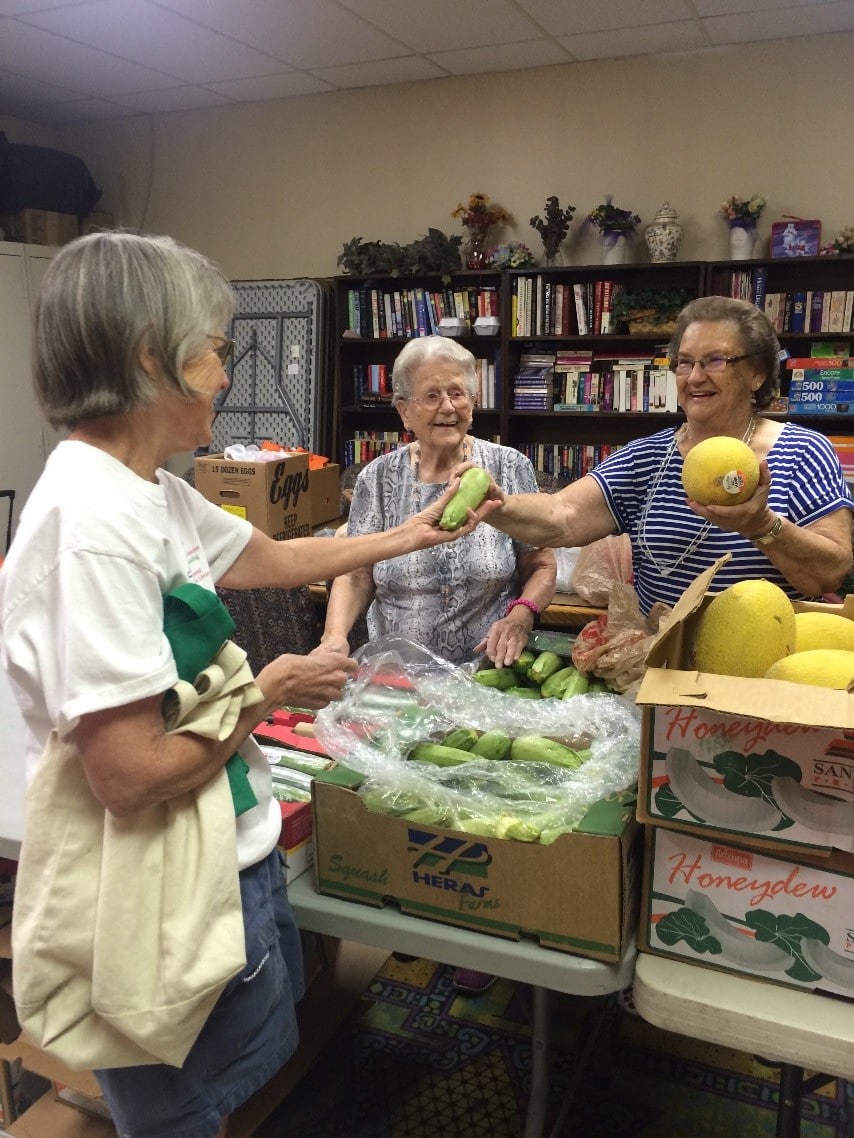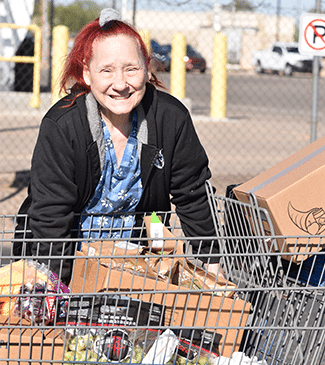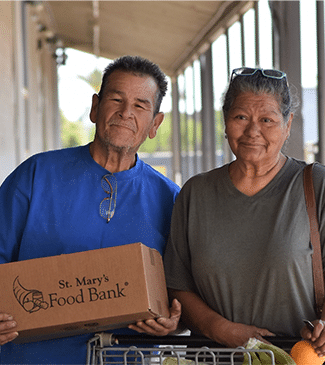
Volunteer Spotlight – April 2018
April 3, 2018
School Closure Statement
April 24, 2018[vc_row][vc_column][vc_column_text]The U.S. Food and Drug Administration, along with the Centers for Disease Control and Prevention (CDC) and state and local partners, are investigating a multistate outbreak of E. coli O157:H7 illnesses.
Fast Facts
- The FDA is investigating a multistate outbreak of E. coli O157:H7 illnesses likely linked to chopped romaine lettuce sourced from the winter growing areas in Yuma, Arizona.
- The CDC reports that 35 people in 11 states have become ill. These people reported becoming ill in the time period of March 22, 2018 to March 31, 2018. Twenty-six (93%) of 28 people interviewed reported consuming romaine lettuce in the week before their illness started. Most people reported eating a salad at a restaurant, and romaine lettuce was the only common ingredient identified among the salads eaten. The restaurants reported using bagged, chopped romaine lettuce to make salads. At this time, ill people are not reporting whole heads or hearts of romaine.
- Preliminary information collected by FDA, in conjunction with federal, state, and local partners, indicates that the chopped romaine lettuce that ill people ate was likely grown or originated from the winter growing areas in Yuma, Arizona. No specific grower, supplier, distributor, or brand has been identified at this time.
- The FDA recommends that consumers ask restaurants and other food service establishments where their romaine lettuce originated, and avoid chopped romaine lettuce that originated from Yuma, Arizona. If you cannot confirm the source of the romaine lettuce, do not buy it or eat it. If you have already purchased products containing chopped romaine lettuce, including bagged salads, salad mixes, or prepared salads, throw them away.
- The FDA is continuing to investigate this outbreak and will share more information as it becomes available.
- Consumers who have symptoms of STEC infection should contact their health care provider to report their symptoms and receive care. Although many infections resolve in 5-7 days, they can result in serious illness, including a potentially serious condition called hemolytic uremic syndrome.
- The current outbreak is not related to a recent multistate outbreak of E. coli O157:H7 infections from November to December 2017 linked to leafy greens consumption. People in the previous outbreak were infected with a different DNA fingerprint of E. coli O157:H7 bacteria.
What is the Problem and What is being Done About It?
The FDA and the CDC, along with state and local health officials, are investigating an outbreak of Shiga toxin-producing E. coli O157:H7 infections. There are 35 cases in 11 states: Connecticut (2), Idaho (8), Illinois (1), Michigan (1), Missouri (1), New Jersey (7), New York (2), Ohio (2), Pennsylvania (9), Virginia (1) and Washington (1). The 35 illnesses occurred in the time period of March 22, 2018 to March 31, 2018. The current outbreak is not related to a recent multistate outbreak of E. coli O157:H7 infections linked to leafy greens. People in the previous outbreak were infected with a different DNA fingerprint of E. coli O157:H7 bacteria.
Preliminary information collected by FDA’s Coordinated Outbreak Response and Evaluation (CORE) network, in conjunction with federal, state, and local partners, indicates that the prepared chopped romaine lettuce that ill people ate was likely grown or originated from the winter growing areas in Yuma, Arizona. This region generally supplies romaine to the U.S. during November-March each year. No specific grower, supplier, distributor, or brand has been identified at this time. The FDA currently does not have information to indicate that whole-head romaine lettuce or hearts of romaine have contributed to this outbreak.
CORE is continuing to work with federal, state, and local partners to determine what people ate before they became ill, where they bought and consumed it, and to identify the distribution chain of these foods — all with the goal of identifying any common food or points in the distribution chain where the food might have become contaminated.
In a typical traceback effort, CDC and the FDA identifies clusters of people who became ill, especially in different geographical regions and works to trace the food eaten by those made ill to a common source. In situations where there is no packaging available for the reported or suspect product that may help conduct a traceback, FDA scientists and investigators work with federal and state partners and companies to collect, review and analyze hundreds–sometimes thousands–of invoices and shipping documents. This process is labor-intensive, but also dependent on the availability and quality of records.
What are the Symptoms of E. coli O157:H7 Infection?
The symptoms of Shiga toxin-producing (STEC) E. coli infections vary for each person but often include severe stomach cramps and bloody diarrhea. If there is fever, it is usually not very high (less than 101 degrees Fahrenheit /less than 38.5 degrees Celsius). Most people get better within 5–7 days. Some infections are very mild, but others are severe or even life-threatening.
Around 5–10 percent of those who are diagnosed with STEC infection develop a potentially life-threatening complication, known as hemolytic uremic syndrome (HUS).
Symptoms of HUS include fever, abdominal pain, feeling very tired, decreased frequency of urination, small unexplained bruises or bleeding, and pallor. Most people with HUS recover within a few weeks, but some suffer permanent damage or die. People who experience these symptoms should seek emergency medical care immediately. Persons with HUS should be hospitalized because their kidneys may stop working (acute renal failure), but they may also develop other serious problems such as hypertension, chronic kidney disease, and neurologic problems.
Who is at Risk?
People of any age can become infected with Shiga toxin-producing (STEC) E. coli. Children under the age of 5 years, adults older than 65, and people with weakened immune systems are more likely than others to develop severe illness, including HUS, but even healthy older children and young adults can become seriously ill.
What Do Restaurants and Retailers Need To Do?
Retailers, restaurants, and other food service operators should not sell or serve any chopped romaine lettuce from the winter growing areas in Yuma, Arizona. If you cannot determine the source of your chopped romaine lettuce, do not sell or serve it. The FDA currently does not have information to indicate that whole-head romaine lettuce or hearts of romaine have contributed to this outbreak.
Retailers, restaurants, and other food service operators should always take steps to avoid the cross contamination of cutting surfaces and utensils through contact with potentially contaminated products. Retailers, restaurants, and other food service operators should always take steps to adequately control the temperature of cut leafy greens and to avoid cross contamination of cutting surfaces and utensils through contact with potentially contaminated products. To prevent cross contamination, you should follow the steps below:
- Wash and sanitize display cases and refrigerators where potentially contaminated products were stored.
- Wash and sanitize cutting boards, surfaces, and utensils used to prepare, serve, or store potentially contaminated products.
- Wash hands with hot water and soap following the cleaning and sanitation process.
- In accordance with the FDA Food Code 2017, cut leafy greens, including romaine lettuce, require time/temperature control for safety and should be refrigerated at 41°F or lower.
Regular frequent cleaning and sanitizing of food contact surfaces and utensils used in food preparation may help to minimize the likelihood of cross-contamination.
What Do Consumers Need To Do?
Consumers should ask retailers where their romaine lettuce was sourced from and not eat or buy chopped romaine lettuce from Yuma, Arizona.
If you have already bought products containing chopped romaine lettuce, such as bagged salads, salad mixes or prepared salads, throw them away and do not eat them.
At this time, the FDA does not have information to indicate that whole-head romaine lettuce or hearts of romaine have contributed to this outbreak.
Consumers should always practice safe food handling and preparation measures. It is recommended that they wash hands, utensils, and surfaces with hot, soapy water before and after handling food.
For refrigerators and other food preparation surfaces and food cutting utensils that may have come in contact with contaminated foods, it is very important that the consumers thoroughly clean these areas and items.
Consumers should follow these simple steps:
- Wash the inside walls and shelves of the refrigerator, cutting boards and countertops; then sanitize them with a solution of one tablespoon of chlorine bleach to one gallon of hot water; dry with a clean cloth or paper towel that has not been previously used.
- Wash hands with warm water and soap for at least 20 seconds before and after handling food.
- Wipe up spills in the refrigerator immediately and clean the refrigerator regularly.
- Always wash hands with hot, soapy water following the cleaning and sanitization process.
- Persons who think they might have become ill from eating potentially contaminated foods should consult their health care provider.
Who Should be Contacted?
People who think they might have symptoms of an E. coli infection should consult their health care provider.
People with questions about food safety can call the FDA at 1-888-SAFEFOOD or consult the fda.gov website: http://www.fda.gov.
Source:
U.S. Food & Drug Administration (FDA), “FDA Investigating Multistate Outbreak of E. coli O157:H7 Infections Likely Linked to Chopped Romaine from Yuma Growing Region” Message to recipient. 13, April 2018. Web.[/vc_column_text][/vc_column][/vc_row]




